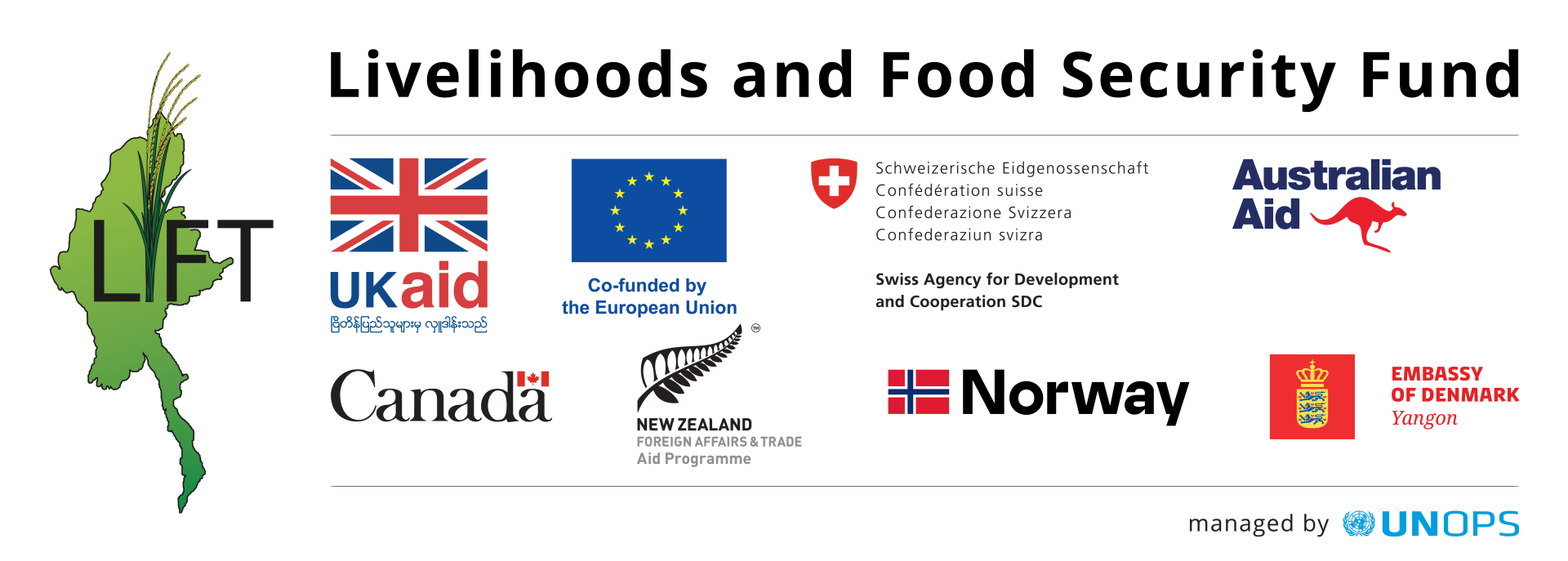
The Tat Lan development programme in Myebon, Minbya, Pauktaw and Kyaukphyu is supporting income generation in vulnerable households through community-led social protection infrastructure projects.
San Ba Yar is a village with 200 years of history, and no one believed it could be developed. U Khwe Chay, who has spent every day of his 67 years inthis village says, ”It is a dream come true that IRC is supporting us to build a walk way and wave wall to protect our village from sea water flooding. It would have been unimaginable in the past that we could build something like this,” he says.

Social Protection infrastructure
For the first time in their lives Rakhine State villagers who are participating in the Tat Lan programme, are realizing their own potential to develop the infrastructure their community needs.Tat Lan, funded by LIFT, the Livelihood and Food Security Trust Fund invites Village Development Committees (VDCs) to prepare a proposal for community–led infrastructure development projects. Communities prioritise the most important needs of their villagers and ask Tat Lan to fund the implementation through the social protection, cash-for-work project. The social protection component provides income for the most vulnerable members in each community. VDCs select the most needing households and invite them to choose one person to participate in the development of the infrastructure of their village.
Villagers in Te Nan Pyin, unanimously requested Tat Lan to fund them to build a six-foot-high embankment with a wide walk way across the top to give villagers a safe pathway between their jetty and their village. The community is still raw as they recall a Cyclone Komen tragedy that deeply affected everyone. A young, pregnant mother slipped as she crossed the Te Nan Pyin flooded embankment on her way home. Her husband was walking ahead of her, but when he turned around, she had disappeared.

He ran to where he last saw her then went back into the village asking if anyone had found her. Struggling with her disappearance, he could not understand she had fallen until her body was found. The loss of her life motivated the community to work with haste to raise their embankment beyond Cyclone Komen flood levels.
The leader of the Te Nan Pyin infrastructure project is Ma Khin Sein, a 34-year-old widow and mother to three daughters aged 12, 9 and 3 years. Ma Khin Sein’s husband died of kidney failure last year in Thailand where he went for work after his paddy crop failed in 2014. Left with a debt of 800,000MMK Ma Khin Sein thought of killing herself when she heard her husband had died. The 2 kg mud sods she lifts a hundred times a day are light compared with her worries. “I am pleased to have this work, so I can feed my family,” she says.
Addressing isolation
The Kyein Chaung community is grateful Tat Lan is enabling them to breaking down their isolation by building a 10,000-foot walkway to link them to their closest neighbor, Yin Bwe village, four miles away. The walk way will enable Yin Bwe teenagers to attend secondary education in Kyein Chaung’s recently established high school, where 90 students have enrolled in the last six months.

Both communities hope the 33,650,000 MMK road will enable them to trade with each other and they are contributing 1,830, 000MMK towards the project, which employs 20 teams, each with 11 workers from Yin Bwe and Kyein Chaung. Working towards each other, the teams hope to complete the road in 50 days.
Tidal protection
Before Cyclone Komen flooded their village, the San Ba Yar community had no hesitation in selecting the 6-foot-high embankment and village walkway as the most important project for their community, and so they submitted a proposal to Tat Lan.
Vulnerable to cyclones, people in San Ba Yar remember Cyclone Giri, when they lost their homes and their livestock.

They believe the 3,100ft (1,100 metres) walkway around the village perimeter and through its centre will give villagers access to each other when the tide is high. This 6-foot embankment is taller than the highest known King-tide and the community believes it will protect their paddy fields from high seas.
Building a retaining fence to prevent the erosion of the walkway through the village, Daw Ma Khine, 67, is grateful for employment which helps her pay for food for her grandchildren. Her son, the children’s father, lost his livelihood in the flooding that followed the torrential rains of Cyclone Komen in August 2015. One of 60 people chosen to work for 50 days on the project, Daw Ma Khine and her fellow workers are equally paid the minimum wage each day.
The Tat Lan consortium of INGOs includes IRC, Save the Children, Oxfam, CARE International, and Better Life Organisation. The programme is funded by the multi donor Livelihood and Food Security Trust Fund LIFT.


